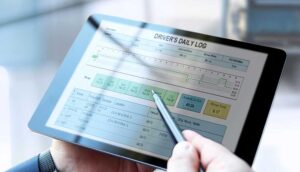Mobile carriers began shutting down their 3G networks in February and will continue to do so throughout 2022 to make room for more advanced network services, like 5G.
As a result, many older cellphones and other mobile devices, such as electronic logging devices (ELDs), will be unable to use data services, according to the Federal Motor Carrier Safety Administration (FMCSA).
Velociti President Deryk Powell said the transition will mean improved functionality for fleets and notes the 5G migration is pivotal for technologies like autonomous vehicles. In particular, 5G enables autonomous vehicles to react to road conditions.
“This is only possible with the ultra-low latency found in 5G,” he noted.
However, Powell cautioned that hurdles remain for those who haven’t yet made the transition away from 3G systems.
“There is certainly concern that delayed upgrades, exacerbated by continued supply chain shortages, could result in a situation throughout the next year or more where many carriers lose functionality of their systems,” he added.
The next planned sunset is scheduled for June 30 by Sprint LTE (T-Mobile). AT&T and Sprint 3G (T-Mobile) turned off their 3G on February 22 and March 31, respectively. Verizon will be the last major cell carrier to switch off its 3G with a planned end date of December 31.
Many mobile carriers, such as Cricket, Boost, Straight Talk, and several Lifeline mobile service providers, utilize the AT&T, Verizon, and T-Mobile networks. This means that many cellphones and other mobile devices relying on 3G technology will be unable to use data services once 3G service is permanently terminated.
The network shutdowns will impact motor carriers if their ELDs rely on a 3G network to record hours-of-service (HOS) data and transfer it to a safety official.
Any ELD that requires 3G cellular connectivity to function will no longer be in compliance with the technical specifications in the federal ELD rule once the 3G network it relies on is sunsetted, according to the FMCSA.
“When in an area that does not support 3G, a 3G device will register a malfunction,” stated an FMCSA news release. “In accordance with 49 CFR 395.34, the carrier has eight days to get the malfunction resolved, in this case by replacement, unless an extension is granted.”
Motor carriers should already be working with their ELD providers to upgrade or replace devices that rely on a 3G network, the FMCSA said.
First and foremost, carriers should confirm whether their ELDs rely on a 3G network.
If you aren’t sure whether your company’s ELDs rely on a 3G network, contact your provider. If your ELD does not rely on 3G and meets all minimum requirements, no further action is needed.
You can also ask your provider for an upgrade or replacement plan. If your ELDs rely on a 3G network, ask the service provider about its plan for upgrading or replacing your devices to ones that will be supported after the 3G sunset.
FMCSA strongly encourages motor carriers to take the necessary actions as soon as possible to avoid compliance issues.
Many fleets are using the sunsetting of 3G networks as an opportunity to consider alternative technology providers, said Powell.
For those electing to make such a move, many other integration and back-office factors come into play, including IT-infrastructure support, billing and invoicing, and internal safety standards — all of which should be discussed with service providers.
Powell suggests once a purchasing decision is made, establish a time line for migration.
The availability of 4G device hardware is the gating factor in determining if the project can be completed before the applicable 3G network shutdown dates, so time is of the essence in completing these initial steps.
The migration itself is not a simple device swap. It is a significant project with potentially severe implications if not given proper consideration, such as unexpected costs due to a poorly planned deployment or having to retouch your entire fleet because the new devices aren’t programmed correctly.
Because of this, a trained and experienced project management team should be engaged to develop and execute the plan.
A comprehensive project plan will entail dozens of steps, and the highest of priorities should be placed on the following, according to Powell:
- Who is on the team? Will it be handled with in-house resources, third-party suppliers, or a combination?
- For hardware supply chain logistics, who will ship what — and where and when?
- Who will perform device kitting, staging, and activation services?
- How will rolling assets (tractors, trailers, forklifts, etc.) be routed in and scheduled for the required service?
- What will be the cadence for communication of the project details and expectations to all impacted employees?
- Who will perform the physical removal of the 3G devices and installation of the 4G devices?
- How will data be tracked to ensure the proper, real-time association between new 4G devices and the specific asset in which each is installed?
- What is the plan for the disposal of the legacy 3G devices?
- Now that new 4G devices are in operation, what is the plan for ongoing monitoring and repair of these devices?
- What could go wrong and what are the necessary contingency plans?
Making the right technology decisions and ensuring new technology performs as expected requires a turnkey approach and expertise in many areas. This includes identifying the ideal hardware and software, overseeing complex project management, and quickly deploying skilled technicians who can install, repair, and replace technology with minimal business disruption, according to Powell.
“The transition from 3G to 4G may seem daunting, but it is manageable with the right team and plan in place,” he noted.
Linda Garner-Bunch has been with The Trucker since 2020, picking up the reins as managing editor in 2022. Linda has nearly 40 years of experience in the publishing industry, covering topics from the trucking and automotive industry to employment, real estate, home decor, crafts, cooking, weddings, high school sports — you name it, she’s written about it. She is also an experienced photographer, designer and copy editor who has a heartfelt love for the trucking industry, from the driver’s seat to the C-suite.















